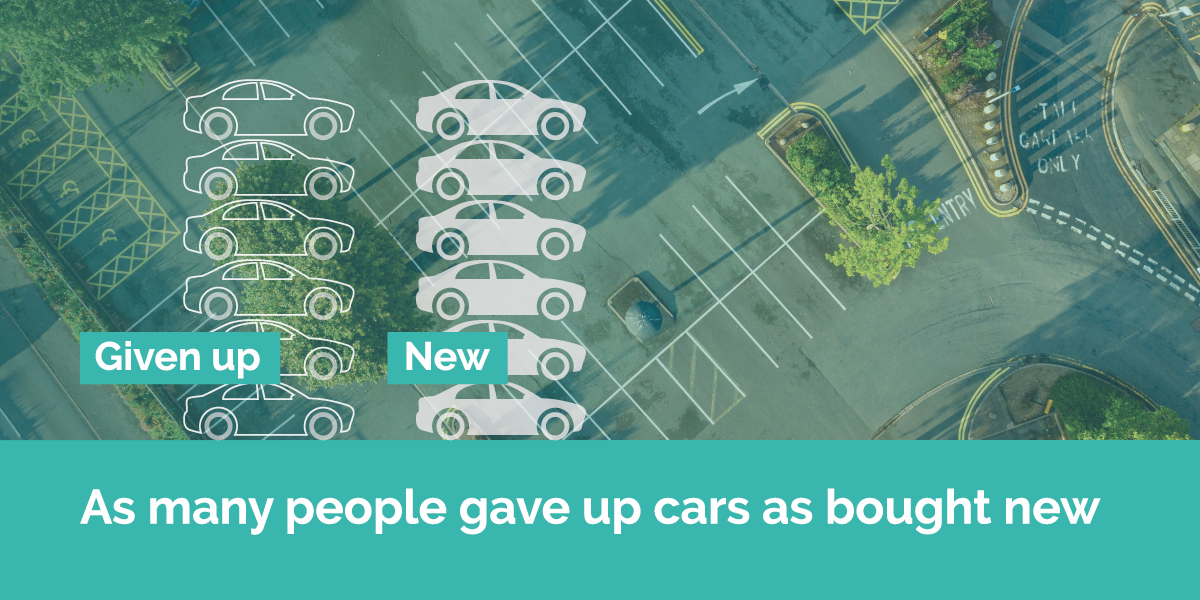Newly-released survey data shows that people have walked and cycled more and more regularly than before the pandemic.
New research finds that during the pandemic people in England and Scotland adopted lower carbon travel options. The majority of people want change and there are new options to permanently reduce greenhouse gas emissions from vehicles.
Before the pandemic our transport systems were overcrowded, congested, polluting and unhealthy. People had come to accept this as normal and inevitable. Newly-released survey data shows that people have walked and cycled more, and worked and shopped more online than ever before. Car use has not recovered and car sales are down, despite very low public transport use. The shifts to active travel (walking and cycling) need to be consolidated and extended to meet the UK’s net-zero carbon goals. The researchers recommend that the Governments’ investment plans should be altered to focus on creating high-quality neighbourhoods where people can walk and cycle to work, shops and services, and safe routes to schools and town and city centres.
Researchers from CREDS and the DecarboN8 network have been tracking how and why travel patterns have been changing in response to the pandemic restrictions.
Walking – the cheapest and easiest transport option for many – has been a big winner. Of those surveyed, there was an increase from 36% of people walking at least three days a week before the first lockdown to 56% of people walking at least three days a week by October 2020. This massive shift has been hidden in plain sight because walking is so often ignored in what gets counted. There was also a significant increase in cycling. The warm conditions of the first lockdown saw levels increase two to threefold. Even in winter, levels held up remarkably well.
The research found that twice as many people are supportive of reallocating space for walking and cycling as object to it. Adjusting investment along these lines has the potential to benefit everyone and would support local jobs and neighbourhood and town centre renewal, as well as carbon reduction goals.
It was assumed that the switch away from public transport would mean everyone turned to the car. However, working from home increased fourfold in our survey to an average of more than two days a week across all workers. This has reduced some car use. New car sales fell 35% during the past year and traffic was, on average, 30% down on 2019.
Dr Greg Marsden who led the research, said:
It would be a huge mistake to try and go back to the overcrowded, polluted and congested transport system we had before the pandemic. Our work shows people have been much more active during the pandemic, particularly walking. We need to go even further and faster in our efforts to create really walkable and cyclable environments and better neighbourhoods if we are to maintain what has been one of the few positives to result from the pandemic. It will have huge health benefits. Building back better needs to be building back differently. To make this happen we also need to keep down the levels of traffic on the road. People have not gone back to car yet in a big way and we can take actions to keep that down.
If everyone who has been working from home during the pandemic did so for 2 days a week that would take 14% of peak period car trips off the roads, equivalent to a school half term. We can channel the money that might have been set aside for new roads to pay for a better, more local and more liveable transport system that works for everyone.”
Reports
- See the briefing report: At a crossroads – Travel adaptations during Covid-19 restrictions and where next?
- See the full report: Report: At a crossroads – Travel adaptations during Covid-19 restrictions and where next?

Banner photo credit: Eddie Junior on Unsplash
